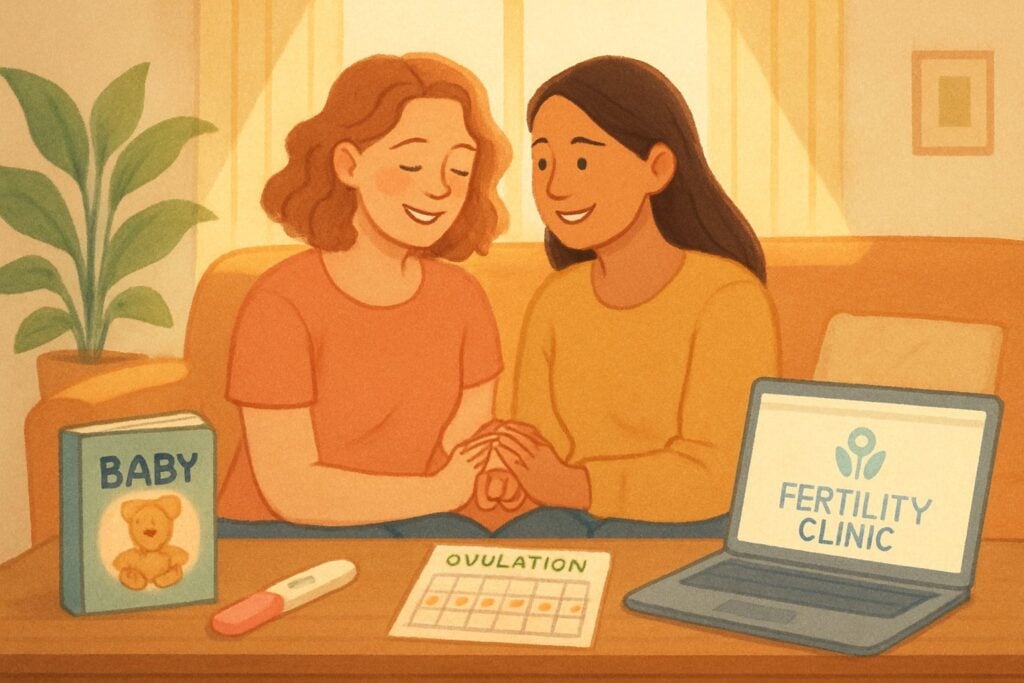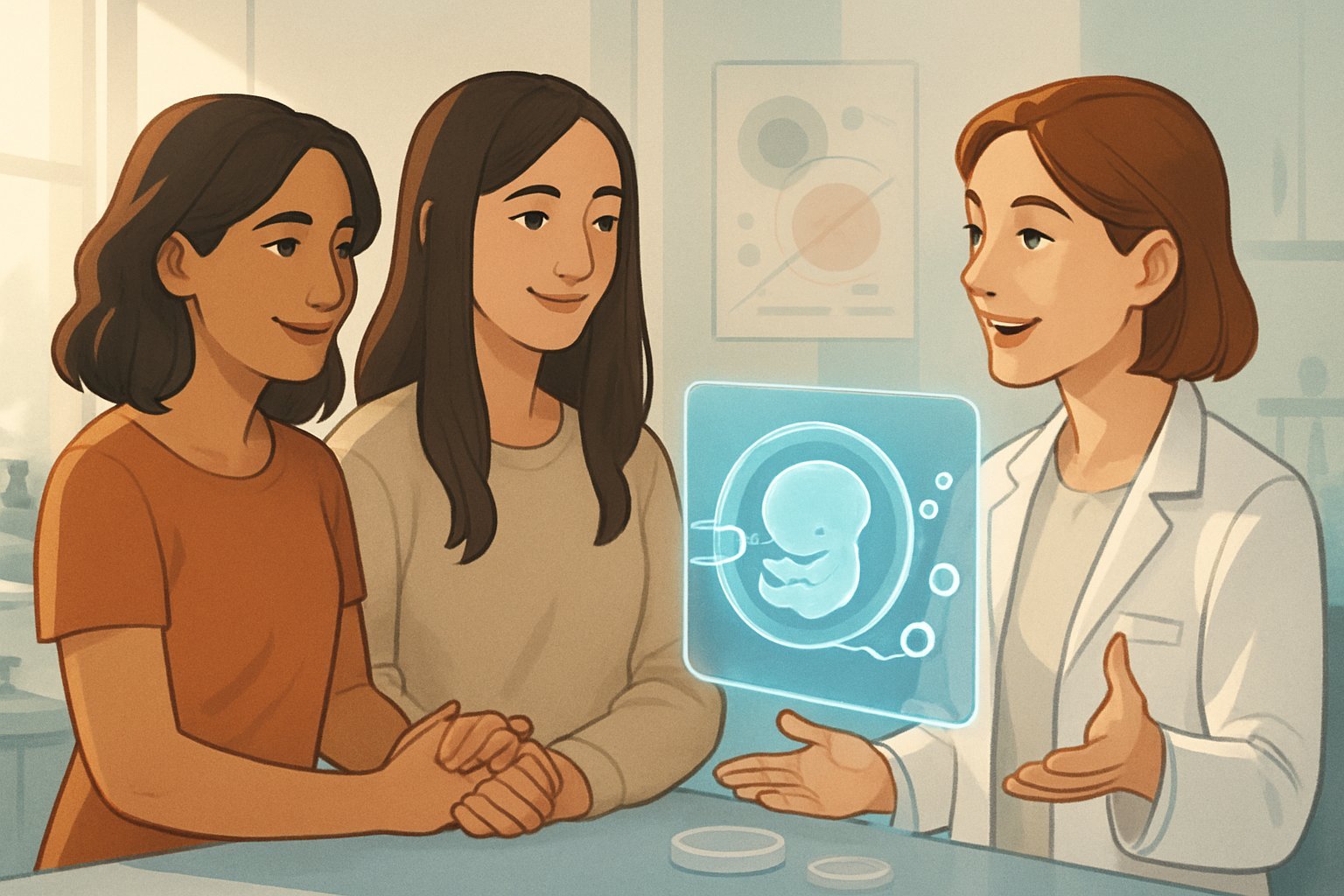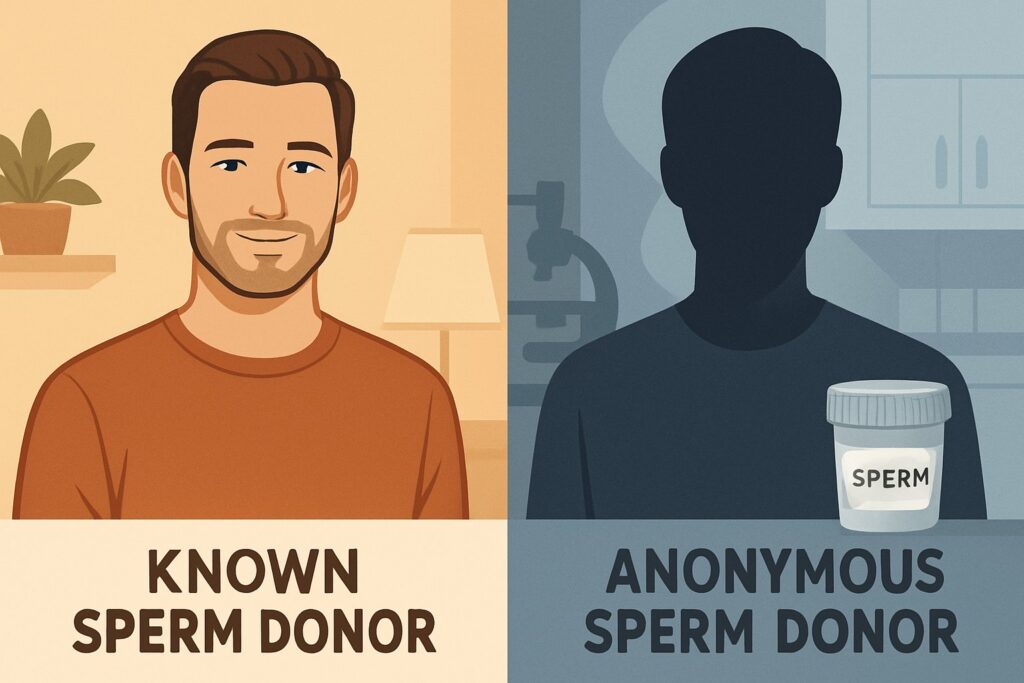Can Two Women Have a Baby? Science, Methods, and Possibilities

Absolutely, two women can have a baby together thanks to modern reproductive technology. These days, same-sex couples and LGBTQ+ families have real options—like IVF, reciprocal IVF, and artificial insemination—to make motherhood happen.
Medical advances now let both women take part, both biologically and emotionally, in creating a family.
With treatments like reciprocal IVF, one woman provides the egg and the other carries the pregnancy. This gives both a special connection with their child.
Usually, this process means picking a sperm donor and working closely with fertility experts.
If you’re curious about how two women can build a family together, it’s worth learning about these options. Legal and emotional factors also come into play, so the journey to motherhood looks a bit different for every family.
How Two Women Can Have a Baby: Modern Reproductive Technologies
Two women who want a biological child together have several ways to make it happen. Assisted reproductive technology now helps create genetic, gestational, or legal connections to their child, depending on the chosen method.
Overview of Assisted Reproductive Technology
Assisted reproductive technology (ART) covers medical procedures that help people have children. For female couples, the main options are in vitro fertilization (IVF), reciprocal IVF, and artificial insemination.
ART usually involves steps like ovarian stimulation, egg retrieval, and embryo transfer. Couples use a sperm donor, who can be anonymous or known. The best method depends on health, cost, and personal wishes.
Doctors may recommend health screening and genetic testing to boost the odds of a healthy pregnancy and baby. Fertility clinics walk couples through these steps. If you want more info, check out this guide to reproductive technology for same-sex couples.
In Vitro Fertilization and Reciprocal IVF
In vitro fertilization (IVF) involves combining an egg and sperm in a lab. Then, a doctor transfers the embryo to the uterus. For two women, this usually means using donor sperm.
Reciprocal IVF lets both women share a biological link with their child. One provides the egg, and her partner carries the embryo. That way, one is the genetic mom and the other is the birth mom.
IVF steps include ovarian stimulation, egg retrieval, fertilization with donor sperm, and embryo transfer. Preimplantation genetic testing can check for health issues before transfer.
Artificial Insemination and IUI
Artificial insemination is a bit simpler. Doctors insert donor sperm into the uterus or cervix during ovulation. The main types are intrauterine insemination (IUI) and intracervical insemination (ICI).
IUI happens in a clinic and is more common. It gives sperm a better shot at reaching the egg. Some couples try home insemination, but clinic-based IUI usually works better.
You’ll need donor sperm, which you can pick with help from the clinic or a sperm bank. IUI is less expensive and less invasive than IVF but may take a few tries.
Choosing a Fertility Clinic and Specialists
Picking a good fertility clinic matters a lot. Clinics vary in success rates, services, and experience with same-sex parenting.
Here’s a quick checklist for choosing a clinic:
- Experience with same-sex couples
- Access to donor sperm and genetic testing
- Clear info on costs and legal issues
- Supportive staff and counseling
Meeting with fertility specialists helps answer questions about the process, health screening, and donor selection. Good communication and a personal touch can really help lower stress. For more tips, see how two women can have a biological baby at a fertility clinic.

Family-Building Alternatives for Lesbian Couples
Many lesbian couples look into different ways to start a family. Adoption and working with a gestational carrier are two common options, each with its own legal and medical steps.
Adoption and Second-Parent Adoption
Adoption lets two women become parents even without a genetic link to the child. Couples can go for domestic or international adoption, but laws and policies shift depending on the country or agency.
In domestic adoption, sometimes only one woman is listed as the legal parent at first. Second-parent adoption (or stepparent adoption) allows the non-biological mom to become a legal parent too. This gives both women full legal rights and responsibilities.
That’s really important for family security, especially if you move to a state with different LGBTQ+ parenting laws.
Support from LGBTQ+ parenting groups can make a difference during the paperwork and emotional ups and downs. These groups share tips on finding welcoming agencies and handling interviews.
Using a Gestational Carrier or Surrogacy
Some lesbian couples choose a gestational carrier (surrogacy) to grow their family. In this process, doctors create an embryo using one partner’s egg and donor sperm. The embryo is transferred to the gestational carrier, who carries the pregnancy but isn’t biologically related to the baby.
This gives at least one partner a genetic connection to their child. Picking a gestational carrier involves screenings and legal contracts to protect everyone’s rights.
Surrogacy laws vary by state or country, so legal advice is a must. Couples often talk with doctors about embryo development, donor options, and everyone’s role in the process.
Surrogacy can be expensive and take time. Still, many families value the chance for a biological link and the shared pregnancy experience. You can read more about surrogacy for lesbian couples on specialized fertility clinic websites.
Legal, Social, and Emotional Considerations
Building a family as a same-sex female couple brings its own legal, social, and emotional challenges. Each part of the process—protecting rights, choosing donors, finding support, and planning finances—affects the family’s well-being.
Legal Rights, Protection, and Documentation
Legal steps matter a lot for two women starting a family. Parental rights laws change depending on where you live.
Sometimes, both moms aren’t recognized equally unless you take extra legal steps. For example, one partner may need to adopt the child to make sure rights are clear, even if both names are on the birth certificate.
Birth certificates don’t always guarantee full legal protection. A court order or adoption can help secure rights if disputes ever come up. Legal agreements with sperm donors also prevent custody problems.
Families should work with lawyers who know LGBTQ+ family law and get advice early on.
Some countries offer strong legal protection, while others don’t recognize both moms as parents. Couples need to gather all the right documents and understand the law to keep their family safe. This step is crucial for the child’s security and everyone’s peace of mind.
Selecting and Working With Sperm Donors
Couples can pick a known donor (someone they know) or an anonymous donor (through a clinic or sperm bank). Each option brings different legal and emotional factors.
With a known donor, legal agreements are super important to set expectations and protect everyone. Choosing an anonymous donor usually means less involvement, but it might raise questions for the child down the road.
Pregnancy success rates depend on the donor’s health, the method (IUI or IVF), and the clinic. Clinics often provide profiles so families can choose traits that matter to them.
It’s smart to get legal advice even if you’re using a sperm bank. Make sure all agreements are written and witnessed. This protects both parents and the child’s future rights.
Emotional Support, Resources, and Community
Starting a family through assisted reproduction can be stressful, exciting, and sometimes a little overwhelming. Emotional support helps both before and after conception.
Couples might face tough questions from family, friends, or society, which can feel isolating. Counseling can help parents work through their feelings and make things smoother.
Support groups—online or in person—offer community and shared experiences. These networks give a space to talk, ask questions, and learn from others who’ve been there.
Connecting with LGBTQ+ organizations for advice and resources is a good move. Some clinics also offer mental health support for couples during treatment. Hearing about other families’ journeys can be comforting and encouraging.
Financial and Family Planning
Building a family this way can get expensive. Costs include medical procedures (like IUI or IVF), legal fees, donor fees, and sometimes travel.
It’s important to set a budget before you start and look into insurance or financial aid options. Some clinics offer payment plans or financial counseling.
Try to plan for all possible costs, including medicines and unexpected events. Many people find saving up in advance is necessary.
Family planning also means thinking about future needs—childcare, school, maybe even another child. Couples should review their finances, set realistic goals, and get professional advice if needed. A solid plan helps avoid surprises.

Scientific Perspectives and Limitations
Biology is at the core of human reproduction. Some possibilities for two women to have a baby together face real scientific and practical obstacles.
Understanding Female Sperm and Parthenogenesis
People sometimes talk about “female sperm,” meaning making sperm cells from a woman’s genetic material. So far, scientists haven’t managed to create real human sperm from female cells.
Human eggs don’t have a Y chromosome, which is needed to make typical male sperm cells. That’s a big problem.
Parthenogenesis is when an egg develops into an embryo without sperm—a “virgin birth.” Some reptiles and insects do this, but humans can’t. Human babies need genes from both an egg and sperm for healthy development.
A baby without sperm hasn’t been born using these methods. The main scientific barriers are the differences in eggs and sperm, and the need for certain chromosomes only found in male sperm. These limits shape what’s possible for same-sex female couples who want to share genes with their baby.
Frequently Asked Questions
There are a few ways for two women to have a child, but most require sperm donation for now. Modern medicine does offer real paths for both partners to participate—whether in creating or carrying their baby.
What are the available medical procedures for two women to have a biological child together?
A common option is intrauterine insemination (IUI) with donor sperm.
People also use in vitro fertilization (IVF), especially if both partners want to be involved.
Reciprocal IVF lets one woman provide the eggs and the other carry the pregnancy.
You can check out this guide on procedures for same-sex couples if you want more details.
Is it possible to use bone marrow to conceive a child between two women?
At this point, science hasn’t made it possible for two women to have a baby using bone marrow cells to create sperm.
Researchers tried this in animals, but it hasn’t worked for humans, and clinics don’t offer it.
Right now, donor sperm remains the main route for same-sex female couples who want a child.
How does reciprocal IVF work for female same-sex couples?
In reciprocal IVF, doctors collect eggs from one partner and fertilize them in a lab with donor sperm.
They then transfer the embryo into the other partner’s uterus.
This approach lets one woman be the biological mother (egg provider), while the other carries and gives birth.
A lot of couples like this method because both partners get to participate in the process.
Can a woman become pregnant by using another woman’s egg, and what does the process involve?
Yes, a woman can carry a pregnancy using another woman’s egg through IVF.
The steps include egg retrieval from the donor, fertilizing the egg with donor sperm, and then transferring the embryo to the woman who’ll carry the pregnancy.
This way, both women can have meaningful roles in the journey.
What advancements have been made in reproductive technology for same-sex female partners wishing to share genetic links with their child?
Reciprocal IVF has changed the game, making it possible for both women to have a genetic or biological connection to their child.
Technology has also improved embryo screening and increased success rates with donor insemination.
If you want to dig deeper, here’s an article on new reproductive technologies for lesbian couples.
Are there any methods that allow the combination of genetic material from two eggs from female partners?
Right now, there isn’t a proven way to mix DNA from two eggs to create a baby. Researchers have explored the idea, but honestly, science just hasn’t cracked it for humans yet.
Female couples who want a child still need donated sperm to fertilize an egg. If you’re curious, there’s a bit more detail here.







Responses